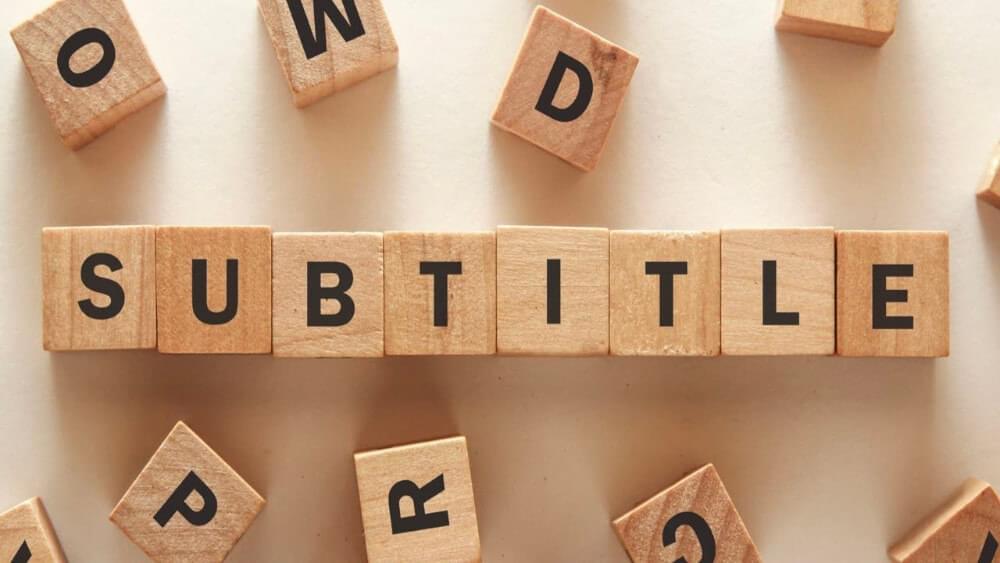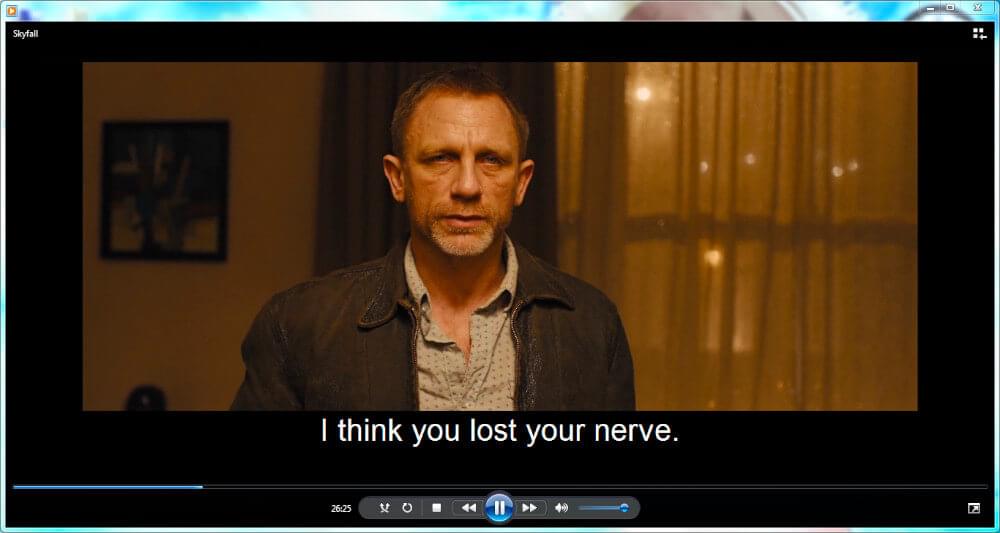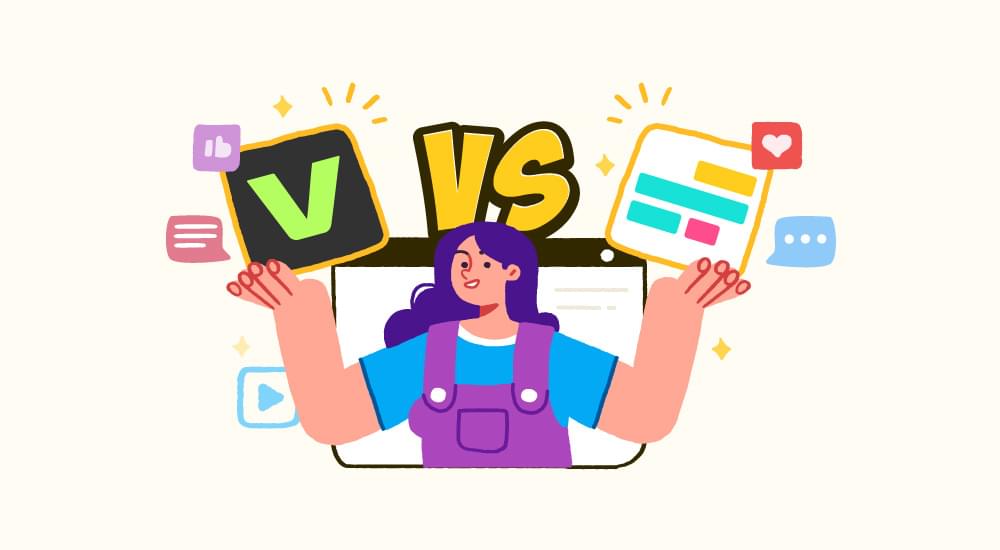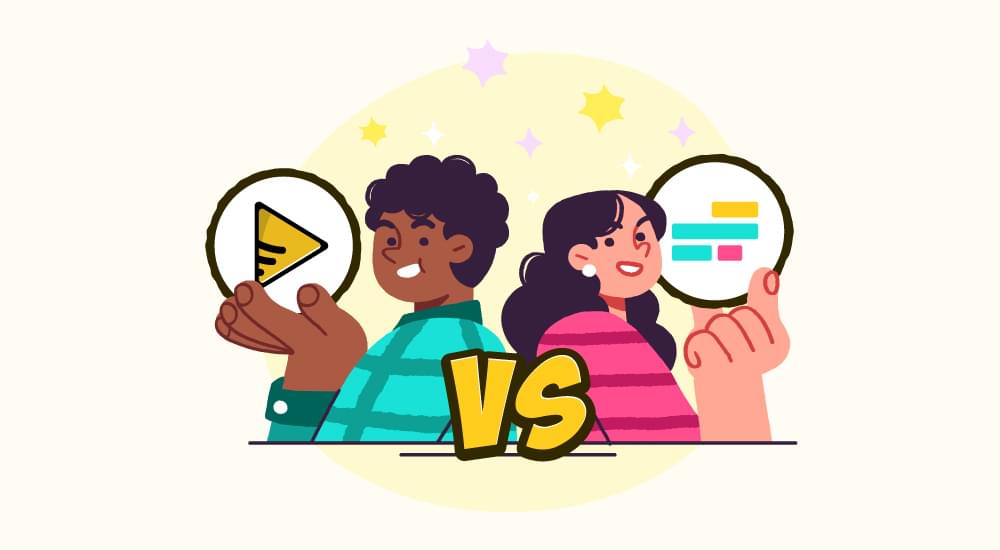
benefits of subtitles in video
Why SDH Subtitles Should Be a Standard Feature in All Media Releases?
Did you know that over 5% of the global population, a staggering 430 million people, suffer from disabling hearing loss? These figures, provided by the World Health Organization, shed light on accommodating individuals with hearing impairments. In the United States alone, around 15% of adults aged 18 and over, roughly 37.5 million, report some trouble hearing.
This is where subtitles for deaf people or hard of hearing (SDH) come into play. However, there is often confusion surrounding the term. Many people are unsure how SDH subtitles differ from traditional subtitles or closed captions and when they should be used. Although these terms are sometimes used interchangeably, they have distinct characteristics.
This blog will delve into the similarities and differences between subtitles, closed captions, and SDH subtitles. We will also look into their importance in digital media marketing. Understanding these nuances is crucial in realizing their significance and ensuring inclusivity.
What are Subtitles?

Subtitles, those tiny lines of text accompanying your favorite movies and TV shows, are crucial in enhancing your viewing experience. But what exactly are subtitles, and how do they work?
In simple terms, subtitles are written transcriptions on the screen simultaneously with the spoken words in a media file. Whether it’s a film, a TV series, or a video clip, subtitles provide a textual representation of the dialogue. They ensure that viewers can follow along and understand the conversations, even if they don’t speak the language or struggle with hearing.
Undoubtedly there are several benefits of subtitles and captions, but it’s important to note that subtitles are not primarily designed for deaf and hard of-hearing users. They focus solely on capturing the spoken text, omitting other audio elements such as sound effects or music. Subtitles bridge the audio and visual aspects of media, allowing individuals to read and comprehend the dialogue while watching the action unfold.
What Subtitles Can Do?
Subtitles have become an indispensable feature in our media consumption. You can also create shared subtitles for the greater good. Subtitles offer several benefits. Let’s have a look:
1. Clarifying Heavily Accented Inaudible Speech
Subtitles act as a lifeline, ensuring that every word is crystal clear, even when accents or dialects present a challenge. Say goodbye to moments of confusion or missed dialogue as subtitles bridge the gap and ensure you catch every precious detail.
2. Translating Foreign Speech
Language is no longer a barrier when subtitles step in. Experience the magic of international cinema, binge-watch captivating foreign series, and easily enjoy global content. Subtitles provide seamless translations, allowing you to immerse yourself in captivating stories worldwide.
3. Allowing Engagement in Noise-Prohibitive Environments
Picture this: you’re on a crowded train, in a bustling coffee shop, or even in the comfort of your home with a sleeping baby. Subtitles save the day by providing a silent voiceover, enabling you to follow the plot and dialogue without disturbing your surroundings. Enjoy your favorite shows and movies anytime, anywhere, without compromise.
4. Improving Language Learning and Literacy
Subtitles offer a fantastic learning tool, whether studying a new language or striving to improve your reading skills. Combining visual and auditory input strengthens language comprehension, vocabulary acquisition, and proficiency.
5. Heightening Attention and Focus
Subtitles can remarkably captivate our attention and maintain our focus on the screen. The visual reinforcement of text enhances engagement, helping us stay immersed in the storyline and catch subtle nuances that might otherwise be missed.
6. Increased Viewership in International Market
Your businesses can expand to new global markets with subtitles. Translating subtitles into their languages provides your global customers with a homely feeling and a sense of personalization.
7. Facilitating Multi-Tasking and Note-Taking
Subtitles provide a unique advantage for those who like to multi-task or take notes while watching media. Whether you’re following a tutorial, educational content, or informative documentaries, subtitles allow you to grasp essential information while simultaneously carrying out other tasks.
What are SDH Subtitles?

While subtitles cater to hearing listeners, SDH (Subtitles for the Deaf and Hard of Hearing) takes accessibility to a new level. Let’s delve deeper into the world of SDH and how it caters to different individuals with hearing impairments:
1. Deaf (lowercase “d”)
This refers to individuals who cannot hear but can communicate orally. SDH subtitles are crucial in bridging the gap by providing a written representation of spoken words, ensuring they get all the dialogue.
2. Deaf (uppercase “D”)
The Deaf community, denoted with an uppercase “D,” comprises individuals primarily communicating through Sign Language. SDH subtitles are instrumental in offering a more inclusive viewing experience by providing additional context through sound effects, speaker tags, and other non-verbal elements.
3. Hard of Hearing
This category encompasses individuals with varying degrees of hearing impairment. Whether they rely on hearing aids or experience partial hearing loss, SDH subtitles serve as a lifeline, capturing the essence of audio elements beyond speech. They enhance comprehension by identifying music, audience reactions like laughter, or environmental sounds like coughing.
SDH subtitles go hand in hand with the audio or video content, synchronizing with the action on-screen. They provide a comprehensive and immersive experience, ensuring every media aspect is accessible to all viewers.
By embracing SDH subtitles, content creators and media platforms foster inclusivity and break down barriers for those with hearing impairments. It’s a decisive step towards creating an environment where everyone can enjoy the magic of storytelling, regardless of their auditory abilities.
SDH Subtitles and Closed Captions: What Sets Them Apart!

While both serve the purpose of providing text-based content to viewers, there are intriguing differences that set them apart. Gain a deeper understanding of the nuances between closed captions and SDH subtitles.
1. The Reach and Medium
The paths of closed captions and SDH subtitles are divergent regarding their availability and compatibility across various media platforms. Closed captions dominate traditional TV broadcasts, while SDH subtitles thrive in streaming videos and Blu-Ray DVDs.
2. Visual Presentation: Formatting and Placement
Closed captions are characterized by their classic white text against a black background, with the freedom to position them anywhere on the screen. In contrast, SDH subtitles tend to reside in the bottom third of the screen and offer versatility in color choices.
3. User Control and Customization
SDH subtitles grant users the freedom to toggle the subtitles on or off and often allow adjustments to font size for optimal readability. Meanwhile, closed captions typically lack these customization options, focusing on delivering important text content.
4. Encoding Methods
Closed captions are encoded as a dynamic stream of commands, control codes, and text, while SDH subtitles take the form of bitmap images or a series of meticulously crafted pixels.
Why Should You Include SDH Subtitles in All Media Releases?

Now that we’ve explored the intriguing distinctions between subtitles, SDH subtitles, and closed captions, let’s dive into why incorporating SDH subtitles in your video content is a game-changer.
1. Better Reach and Increased Viewership
Imagine reaching out to a broader audience and ensuring your message resonates with as many people as possible. With nearly 20% of the global population living with hearing loss, according to the World Health Organization, SDH subtitles provide an inclusive experience for this significant demographic. Additionally, SDH subtitles are a valuable resource for ESL speakers, enabling them to engage effortlessly with your videos.
2. Improved Comprehension
SDH subtitles have the power to enhance viewer comprehension in various ways. They assist viewers in understanding fast-paced or accented speech, making it easier to follow along. For individuals with attention deficit disorders, SDH subtitles help maintain focus and retain critical information throughout the video. Moreover, SDH subtitles cater to those who prefer to mute the audio while benefiting from non-verbal cues and ambient sounds.
3. Compliance
In today’s digital landscape, accessibility compliance is paramount. Failure to make video content accessible may result in legal repercussions. Notable cases like the one involving the NAD (National Association of the Deaf)and former President Donald Trump highlight the importance of providing accommodations such as sign language interpreters during televised briefings. You can proactively ensure compliance and avoid potential lawsuits by incorporating SDH subtitles.
4. Higher Exposure to Social Networks
Capturing the attention of social media users is no easy feat, especially when many prefer watching videos without sound. By including subtitles in your videos, you seize the opportunity to engage viewers who scroll through their feeds on mute. Studies have shown a staggering 40% increase in views for captioned videos. Furthermore, subtitles enable 80% of viewers to stay engaged and watch videos to the end.
5. SEO Benefits
When it comes to search engine optimization, videos present unique challenges. Search engines like Google have limited ability to analyze video content directly. However, by providing subtitles, you provide search engines with valuable textual data that they can index and use to understand the context of your video. This, in turn, boosts your content’s visibility and drives more traffic to your videos.
How to Add SDH Subtitles to Your Videos?

If you’re eager to embrace the benefits of SDH subtitles in your videos, choosing the suitable format for your intended platform is crucial. To get started, transcribing the dialogue and incorporating additional elements such as speaker labels, music cues, and non-verbal events is key.
While producing your SDH subtitles may be the most cost-effective option, be prepared for a time-intensive process, especially if you lack prior experience. While it may save you money, diving into SDH subtitles requires a deep understanding of the format’s intricacies and ensuring seamless synchronization with your video content.
The time investment for creating accurate captions largely depends on the length of your video. If you have hours of footage to transcribe, crafting precise SDH subtitles can easily span weeks. While automated services like SubtitleBee may serve you in this regard. These AI-backed and browser-based software are quick and easy to use, making complicated tasks a breeze. Software like Subtitles can save you time and money with amazingly affordable packages.
Let’s Wrap It!
The benefits of incorporating SDH subtitles into your videos are undeniable, ranging from enhanced SEO to ensuring inclusivity for viewers with hearing impairments and non-native speakers. While creating your subtitles may seem feasible, it can quickly become daunting and time-consuming, particularly if you lack prior experience.
Fortunately, a game-changing solution removes the hassle of subtitling: now try a free trial with a professional subtitling service like SubtitleBee. By entrusting the process to SubtitleBee, you can bid farewell to concerns about accuracy, formatting intricacies, and compliance requirements. With SubtitleBee, you can expect an impressive accuracy rate of 99% or higher, swift turnaround times, and flexible pricing options that cater to your needs. Say goodbye to subtitling headaches and hello to a seamless and streamlined subtitling experience!
Add and translate your subtitles to more than 100 languages with high accuracy












